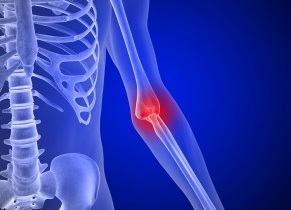The elbow is a joint that is especially prone to injury both suddenly, and from repetitive use injuries. We specialize in treating these delicate joints.
Tendonitis or Lateral Epicondylitis: The elbow is a relatively complex joint, comprised of the articulation of the distal humerus with the round radial head and the saddle shaped ulna bone. The most common complaint heard concerning the elbow is pain along the lateral or outer border of the elbow. It usually starts insidiously and is described as an aching or soreness, sometimes radiating down into the forearm a bit. Gripping things often makes it worse and it is usually not associated with any feelings of instability or abnormal motion. It can be tender or sensitive to the touch along the outer or lateral border of the distal humerus bone and occasionally responds somewhat to anti-inflammatory medicines like aspirin or ibuprofen. In some people it can be present for months and months and in others it seems so chronic that it will never go away. Though the common name for it is “tennis elbow”, most patients who get it are not tennis players. Treatment for it is first to understand the mechanics of the problem so that it can be protected in such a way to let the body try to heal itself. Physical therapy and certain medication routines can assist in this. In refractory or hard to heal cases injections are sometimes tried, however, these often help more with the symptoms than actually healing the problem. Surgery is always a last resort and fortunately is only necessary in a minority of cases.
Instability and intra-articular joint pathology: As an important joint in many sports requiring the upper extremity, like gymnastics, throwing sports and basketball, the elbow is occasionally injured to the point of damage to its ligaments or cartilage. Ligaments can be injured either from a onetime strain or twisting injury or from repetitive activities that cause cumulative injury. Instability can then lead to abnormal function of the elbow and resultant pain with use. Secondary cartilage injury from instability or primary injury from a direct blow or twisting injury can result in loose cartilage or combination cartilage and bone pieces that make the joint motion painful or untrustworthy. Patients often describe minimal pain when the joint is not moving or at rest but problems when they are participating in sports or activities that require use of the elbow such as throwing, lifting or pushing. The discomfort can be intermittent and can result in performance decrease and difficulty with certain aspects of the required elbow us in sports and other daily activities. Treatment revolves around first making a correct diagnosis as the cause or etiology of the problem. This requires a physical exam, x-ray and or MRI studies, and occasionally arthroscopic exam. Once the correct diagnosis is affirmed, treatment can be as simple as muscle strengthening and balancing exercises or if warranted, arthroscopic debridement and/or ligament repair.
Post traumatic and osteo-arthritis: Like other joints, the elbow is subject to injury from trauma or just wear and tear resulting in damage to the normally smooth cartilage surface. Because the elbow’s articular surface is quite complex, damage to or loss of cartilage can result in early pain, catching or popping symptoms. Cartilage damage after trauma or previous fractures at a younger age often do not develop until years later and therefore are not associated with the original injury. Symptoms can be present intermittently at first but over time they seem to become more frequent in occurrence and more severe in magnitude as well. In those symptoms that are not the result of a specific treatable mechanical problem, activity modification and anti-inflammatory medications are usually recommended. Others have a specific mechanical etiology that can benefit from minor surgical intervention such as arthroscopy. In the worst cases, those that have failed all other attempts of more conservative treatment, joint replacement, similar to those performed in the hip or knee, can return a stiff painful elbow to improved motion and function.


